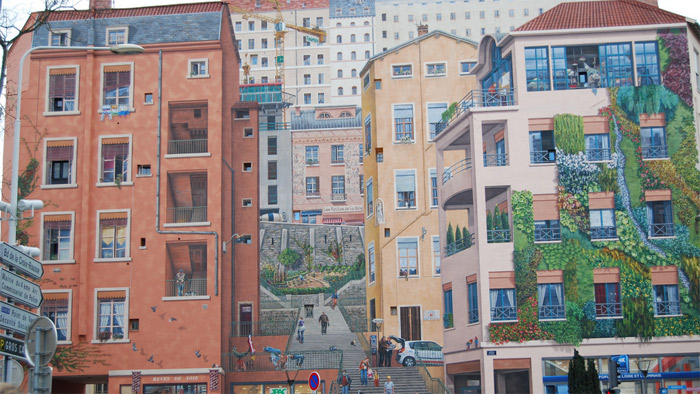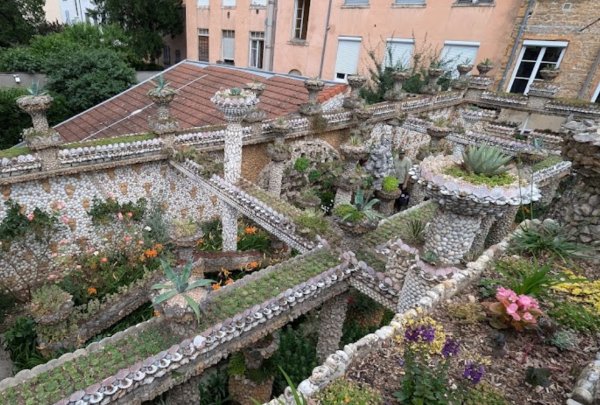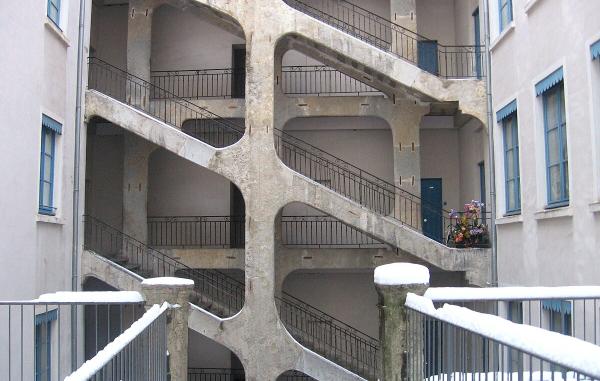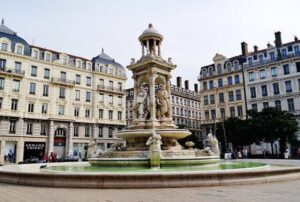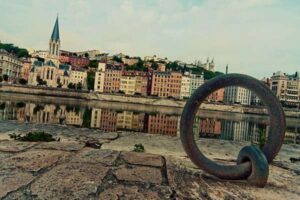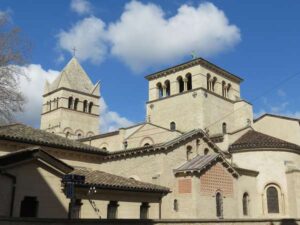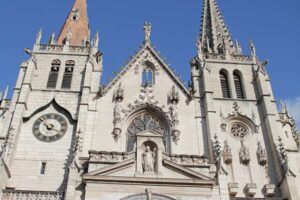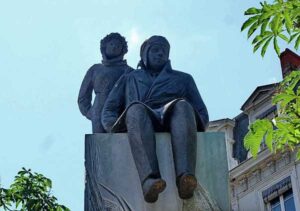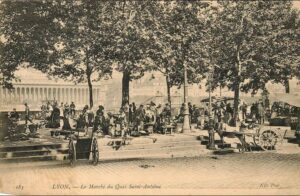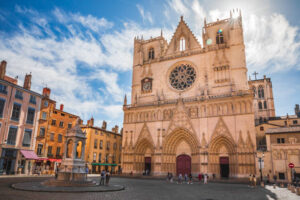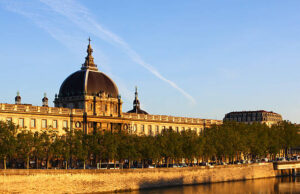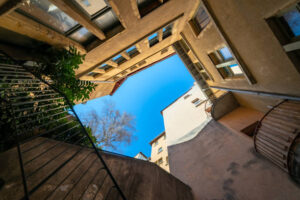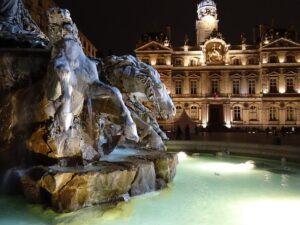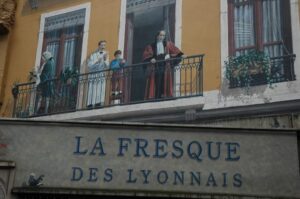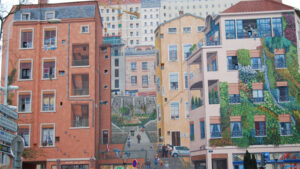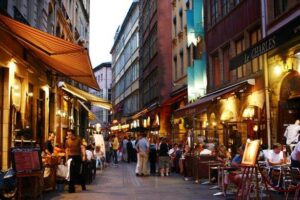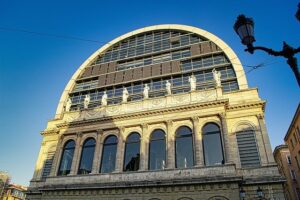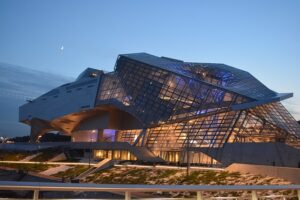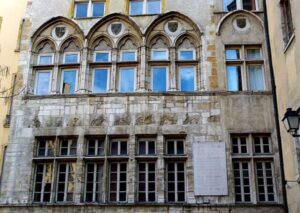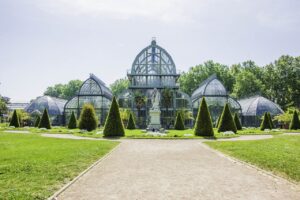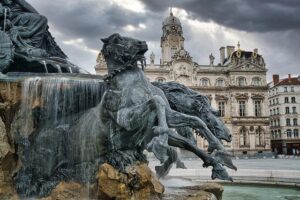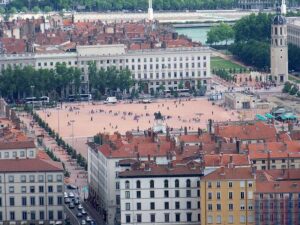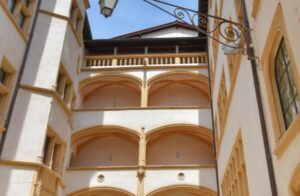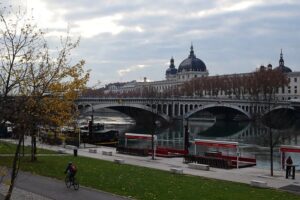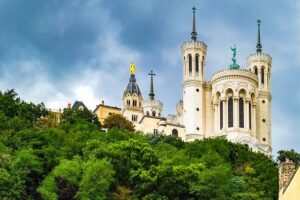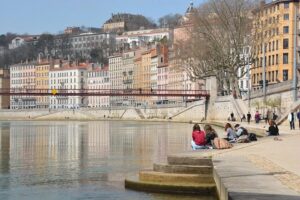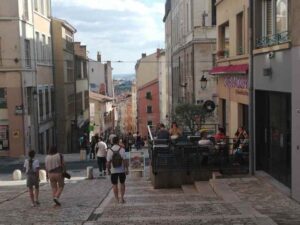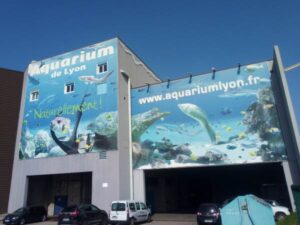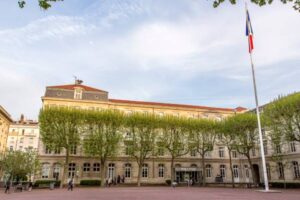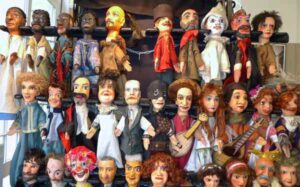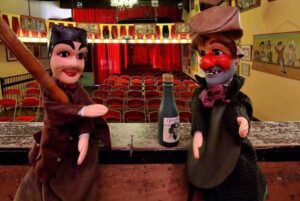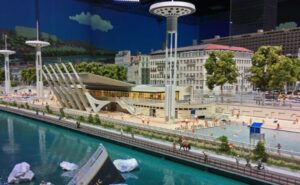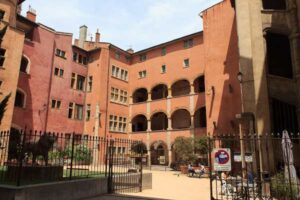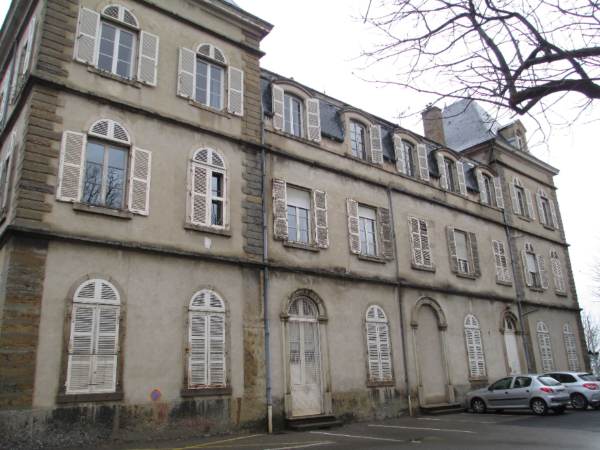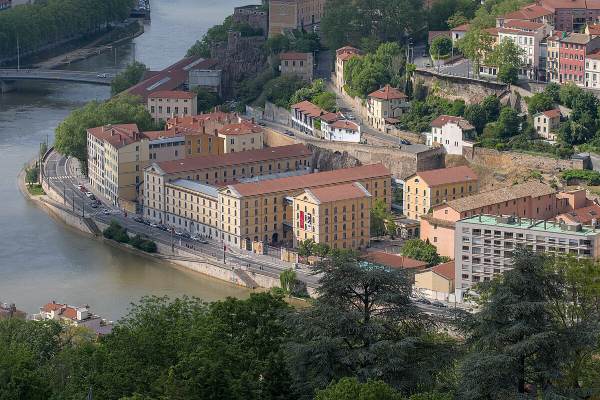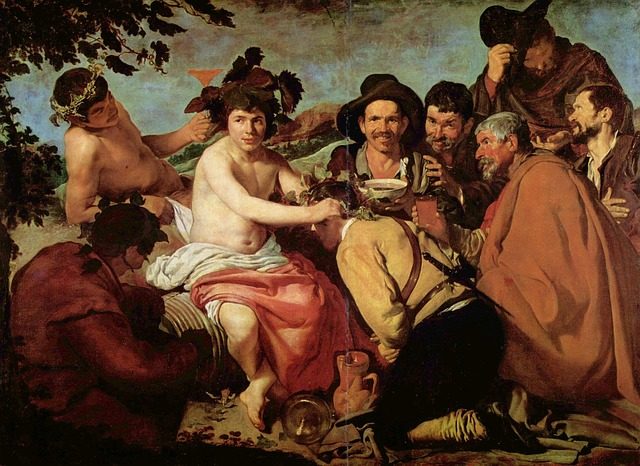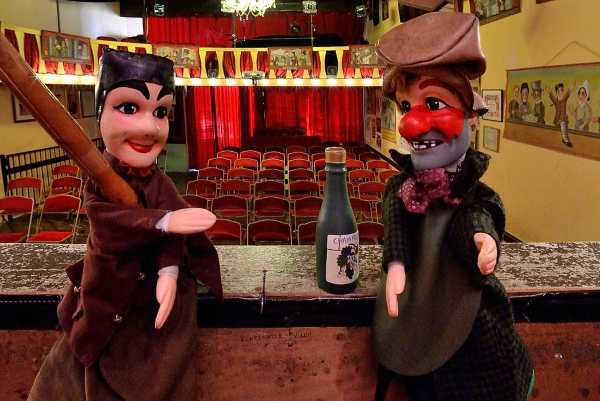This text describes the rich history of mural painting in Lyon. The use of mural painting dates back to antiquity and remains a tradition. In Fourvière, remains of painted walls from the Roman era still exist, testifying to this practice. Several churches in the city preserve traces of ancient frescoes dating from 1002 to 1675.
Religious Painting and Symbolism
The 19th century was a particularly prolific period for painting in Lyon, with a renowned Lyon school of painting, particularly in the religious field. This period was marked by artists such as Louis Janmot and Hippolyte Flandrin, who left their mark on churches such as Saint-Polycarpe and Saint-François-de-Salles. Symbolism was also illustrated by artists such as Pierre Puvis of Chavannes, known for his decoration of the staircase of the Saint-Pierre palace. Louis-Edouard Fournier has, for his part, honored the “Glories of Lyonnais and Beaujolais” with an immense fresco at the General Council.
Mural Painting and Monumental Decorations
The 20th century saw the decoration of churches such as Saint-Paul, Saint-Jacques-le-Majeur and Saint-Pierre-de-Vaise by artists such as Paul Borel, Louise Cottin and Claudius Barriot. Public buildings were also embellished with grandeur, including a 54-metre mural at the Hôtel des Postes by Louis Bouquet in 1937, evoking the influence of Lyon. The façade of the Bourse du Travail was decorated in 1934 with an immense mosaic by F. Fargeot.
Lyon and its Two Hundred Painted Walls
Over the past twenty years, Lyon has been adorned with more than two hundred painted walls, created by teams of painters wishing to contribute to popular public art. This new form of mural painting, often trompe-l'oeil, was very popular with the public and received recognition from UNESCO in 1991 with the award of the World Decade for Cultural Development label to the Tony Garnier Urban Museum.
Lyon, Capital of Mural Painting in France
Companies like Creation City, Wall'Art or independent mural painters have made Lyon the French capital of mural painting, with more than 350 walls throughout Greater Lyon. Some of these walls, such as the Mur des Canuts or the Fresque des Lyonnais, have become emblematic sites of the city. Others, such as the Porte de la Soie or the CRIR wall, respectively illustrate the history of silk in Lyon and depict athletes in a Marathon of the Impossible.
Lyon and beyond
In addition, murals have been created in cities such as Shanghai, Quebec City, as well as representations of the Tower of Babel at the entrance to Boulevard des États-Unis. Oullins is also home to a world-renowned team of muralists, Cité Création, who create monumental walls around the world, from Lyon to Jerusalem.
List of walls
THE Wall of the Canuts – Boulevard des Canuts, Lyon 4th
Created in 1987 and revisited in 1997 during the rehabilitation of Croix-Rousse, this 1,200 m2 fresco, the largest in Europe, shows the daily life of the inhabitants of the working-class silk district.There Fresco of the Lyonnais – Corner of Quai St-Vincent / Rue de la Martinière, Lyon 1st
30 faces of historical Lyon personalities, such as Ste-Blandine, Paul Bocuse, the Lumière brothers, express the history of Lyon through time.There City Library – Corner of the Fisheries Quay / Platière Street, Lyon 1st
This library fresco illustrates nearly 500 references and extracts from Lyon authors, Rabelais, Louise Labé, Voltaire, in a tribute to literary heritage.Street of the Great Chefs – Paul Bocuse Restaurant, Collonges-au-Mont-d'Or
An 80 m2 fresco highlights the historical references of Lyonnaise gastronomy, including Mother Brazier and praised by the former gourmet mayor Edouard Herriot.THE Cinema Wall – Corner of Cours Gambetta / Grande Rue de la Guillotière, Lyon 7th
Revisiting the history of cinema in Lyon from the beginnings of the Lumière brothers to famous film shoots, this fresco is a true trailer for the city's cinematic heritage.THE Tony Garnier Urban Museum – Boulevard of the United States / Rue des Serpollières, Lyon 8th
24 monumental frescoes on the ideal city according to Tony Garnier and international artists offer a unique vision of social housing.Invitations to the City Trip – 98 Avenue Lacassagne, Lyon 3rd
A century of public transport in Lyon told through seven paintings, celebrating the industrial history of Lyon public transport.Research, a Wall They Have Crossed… – 115 Avenue Lacassagne, Lyon 3rd
Two frescoes commemorating the leading figures of scientific research in Lyon, honor personalities who have contributed to health and science.Lyon Terminal – Port Edouard Herriot, Lyon 7th
Containers transformed into works of art symbolize the departure and arrival of the city, uniting logistics and poetry in luminous harmony.There Silk Gate – 4 Rue Carquillat, Lyon 1st
In the heart of the canuts district, this trompe-l'oeil door pays homage to the history of silk weaving, a true Lyon heritage.There Gerland fresco – 18 Rue Pierre de Coubertin, Lyon 7th
Between memories of the 1998 World Cup and a nod to farm animals, this fresco reflects the diversity of Gerland.There Montluc fresco – Dauphiné Street, Lyon 3rd
A historical testimony to the Lyon Resistance, this fresco soberly evokes imprisonment and suffering during the occupation.THE Basilicas of Saint-Just – 9 Rue des Maccabées, Lyon 5th
A fresco that recalls the spiritual past of the site, revealing the ancient presence of the basilicas and offering a scenographic vision of the city in the 16th century.
This series of frescoes guides you through the painted walls of Lyon, a return to the roots of its inscription on the World Heritage List.
History in comics
Les Rues de Lyon is a twelve-page monthly newspaper that offers a complete story in comic strip form each month on the history of Lyon. Entirely from Lyon, it presents true stories created by local authors and also printed on site.
The comic strip available below tells the story of the painted walls of Lyon.

